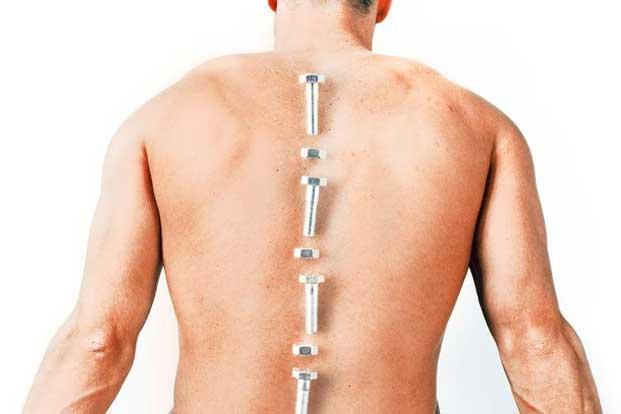Categories
- Bariatric Surgery (11)
- Black Fungus (5)
- Bone Marrow transplant (3)
- Brain Tumor Surgery Navigation Technology (20)
- Cardiac Surgery (66)
- Cardiology (97)
- Computer navigation technology for joint replacements (20)
- Covid Vaccination (17)
- Critical Care (2)
- Dental (19)
- Dermatology (31)
- Dialysis Support Group - “UTSAAH” (11)
- Dietitian (33)
- Emergency Medicine (4)
- Emotional Health (11)
- Endocrinology (33)
- ENT (20)
- Gastroenterology and GI Surgery (53)
- General and Laparoscopic Surgery (21)
- General Surgery (4)
- Gynecology & Obstetrics (183)
- Hematology (20)
- Internal Medicine (294)
- Kidney Transplant (50)
- Kidney Transplantation (20)
- Lung Cancer (8)
- Minimal Invasive Surgery (1)
- Mother & Child (20)
- mucormycosis (5)
- Nephrology (61)
- Neurology (147)
- Neurosurgery (68)
- Nutrition and Dietetics (107)
- Omicron Variant (1)
- Oncology (288)
- Ophthalmology (10)
- Orthopaedics & Joint Replacement (86)
- Paediatrics (59)
- Pediatric Nephrology (3)
- Physiotherapy (5)
- Plastic & Reconstructive Surgery (6)
- Psychiatry and Psychology (90)
- Psychologist (28)
- Pulmonology (72)
- Rheumatology (13)
- Spine Services (21)
- Transradial Angioplasty (16)
- Urology (84)
Query Form
Posted on Apr 19, 2022
What disabilities can result from stroke?
Stroke is a disease of the brain but it can affect the entire body. It is the leading cause of disability and at present, there is limited awareness in the public concerning the same.

Some disabilities that can result from a stroke which includes:
- Paralysis or Problems controlling movement
- Cognitive deficits
- Speech problems
- Swallowing problems
- Emotional deficits
- Pain
- Vision problems
- Continence problems
Paralysis:
Paralysis is one of the most common disabilities caused due to stoke. One-sided paralysis is called Hemiplegia and a related disability that is a one-sided weakness which is called hemiparesis.
The paralysis or weakness may affect only one part such as the face, an arm, or a leg or may affect the entire one side of the body and face. A person who suffers a stroke in the left hemisphere of the brain will show right-sided paralysis or paresis. Conversely, a patient with a stroke on the right side of the brain will show deficits on the left side of the body.
A stroke patient may have problems in performing their daily activities also, such as walking, dressing, eating, and using the bathroom etc.
Damage to lower part of the brain can affect the body’s ability to coordinate movement, disability is called ataxia, which leads to the problems with the body posture, walking, and balance.
Cognitive Deficits:
In a stroke, the part of the brain which is responsible for thinking, awareness, attention, learning, judgment, and memory can also damage. In some cases of stroke, the patient suffers a “neglect” syndrome. The neglect means that a stroke patient has no knowledge of one side of his or her body, or one side of the visual field, or is unaware of the deficit. A stroke patient may be unaware of his or her surroundings or may be unaware of the mental deficits that resulted from the stroke.
Speech Problems:
Stroke patients may develop problems with understanding or form speech, a deficit is called aphasia. It usually occurs along with similar problems in reading or writing. In most people, language problems occur because of damage to the left hemisphere of the brain.
Slurred speech due to incoordination of the muscles because of weakness is called dysarthria and is not a problem with language.
Swallowing Problems:
Swallowing is a complicated task, which needs your brain to coordinate with the different muscles. Due to damage to the part of the brain that controls the muscles for swallowing, some stroke patients have problems with swallowing, called dysphagia. Some symptoms of swallowing problems are coughing while eating or drinking, feeling that food is stuck in the throat, not able to chew food properly, dribbling. Swallowing problems may lead to aspiration.
Emotional Deficits:
A stroke may lead to emotional problems. Stroke patients may have difficulty in controlling their emotions or may express inappropriate emotions like crying or laughing which is known as Emotional lability. One of the emotions that nearly all stroke survivors have to deal with is frustration which eventually can lead to anger & aggressive behavior. Depression is the most common disability among stroke patients. Post-stroke depression may be more than a general sadness resulting from the stroke incident. Post-stroke depression is treated as any other depression is treated, with antidepressant medications, therapies, rehabilitation.
Pain:
Stroke patients may experience pain, uncomfortable numbness, or strange sensations. These sensations may be due to many factors including damage to the sensory regions of the brain, stiff joints, or a disabled limb.
An uncommon type of pain because of stroke is called central stroke pain or central pain syndrome (CPS). This pain results from damage to either brain, spinal cord, or the sensory pathways that link brain and other parts of the body. The pain is a mixture of sensations, including heat and cold, burning, tingling, numbness, and sharp stabbing and underlying aching pain. The pain is often worse in the extremities – the hands and feet – and is made worse by movement and temperature changes, especially cold temperatures.
Vision Problems:
Vision problems happen because of damage to the brain that controls and receives information from eyes. Vision problems can be in form of Visual field defect so that one can only see the right or left half of what they are looking at. This disability is called hemianopia and is a common visual problem after stroke. Sometimes stroke can also lead to eye movement problems.
Continence Problems:
Continence problem is very common in the very early stages of Stroke. It may be in form of increased frequency of urine, difficulty in holding the urine, swallowing clothes without realizing or during sleep which is called as Disinhibition.



